Eye Candy (14)
By:
February 6, 2013
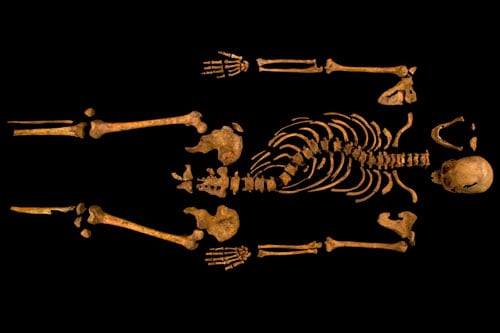
Bones are in the news recently, what with Richard III being unearthed in a Leicester, UK parking lot. Here he is, or was: ignominiously discarded at the time, then equally ignominiously overlaid with modes of transportation certainly worth horse-trading for.
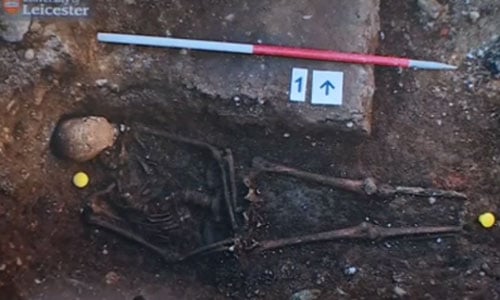

And like ancient equus, his skeleton is all that remains (with some key traces of DNA). His remains, laid out very like an exhibit in the natural history museum of your choice, clearly display some of his other identifying characteristics, as well as an array of pre- and post-mortem slings and arrows, some or most of which proved fatal in 1485.
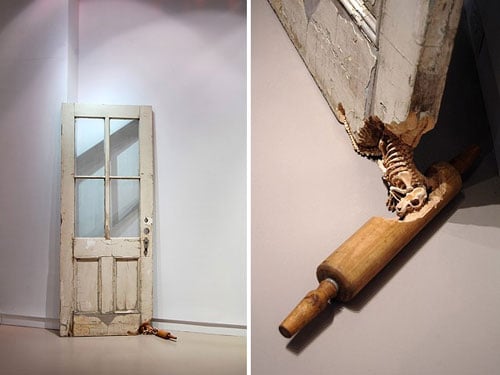
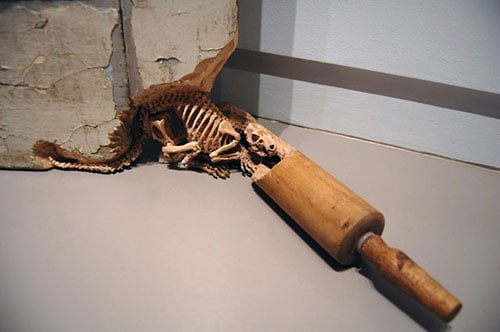
Maskull Lasserre plays with the notion of fossil remains in his elaborately weird wood-carvings. In one of the “common inanimate objects” he depicts, a rolling pin is either being eaten by, or is excavated to reveal, some small fossil monster. In another, a suspended piano harbors a Lovecraftian horror, breaking free of the keys at the very end of the unearthly arpeggio.
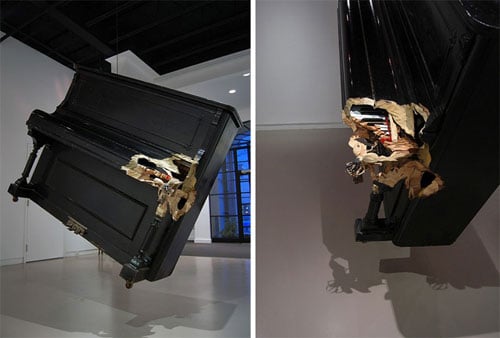
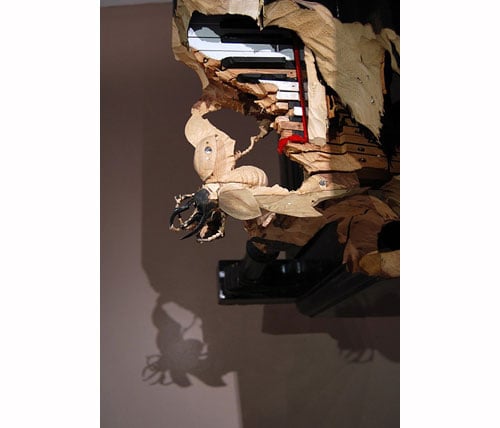
Not limited to carving, Lasserre has also augmented his boots with various paws, all the better to fool you with.

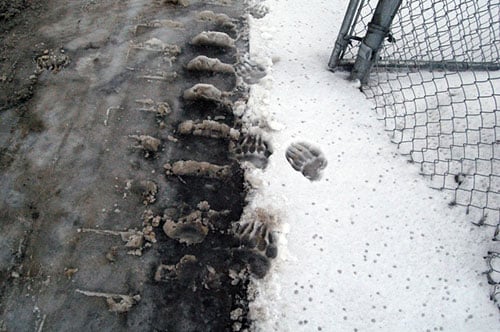
In the right conditions, these would get noticed — or better yet, not right away, to be discovered by some future paleontologists wondering what grizzlies were doing in twenty-first century Boston. Something perhaps not completely inconceivable…
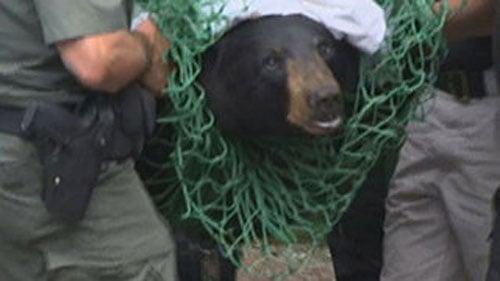
Our final fossil hails from Nova Scotia. Tiny foot- and tail-prints are from Batrachichnus salamandroides, an amphibious vertebrate. The tracks reveal the 8mm creature was walking and then broke into a run – although whether to eat, be eaten, or just for the hell of it, is not recorded.
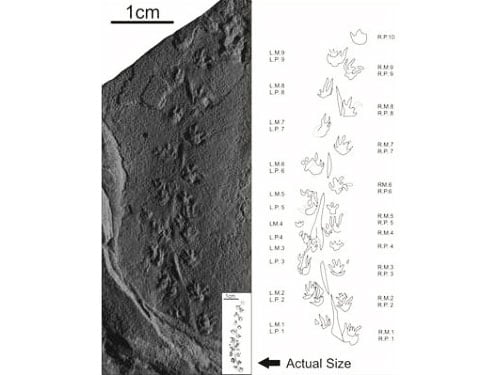
The footprints belonged to a small amphibian which would have roamed Earth 315 million years ago, a creature not unlike a salamander….Study of the footprints by paleontologists at Saint Mary’s University (student Matt Stimson) and the New Mexico Museum of Natural History (Dr. Spencer Lucas) has revealed the trace maker was a juvenile amphibian, similar to a salamander (temnospondyl or microsaur) with an estimated body length of only 8 mm from snout to tail.
My fossil kingdom for a microsaur!

